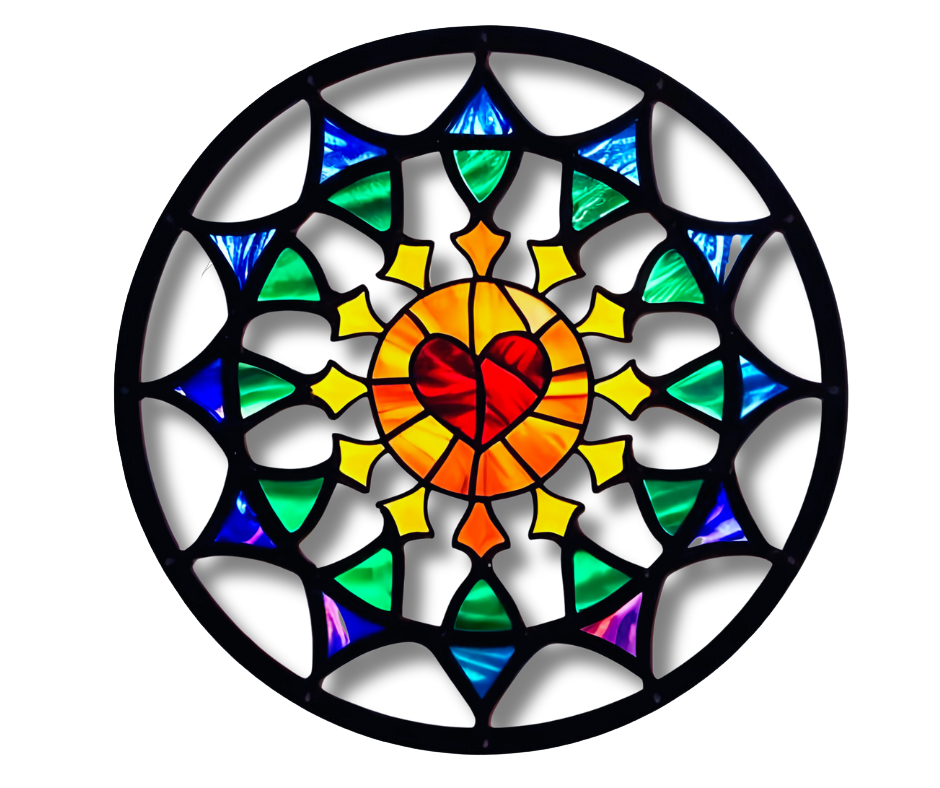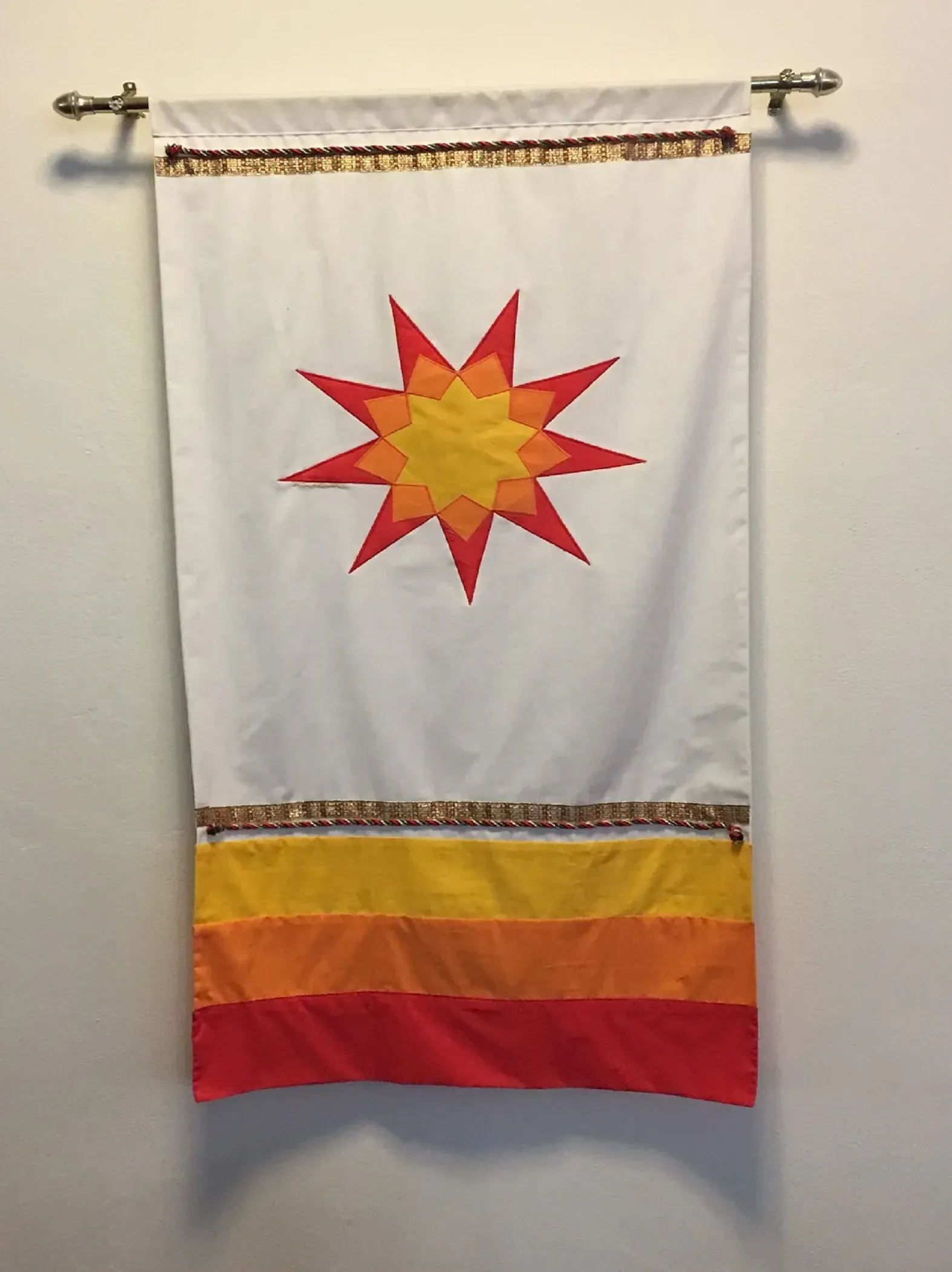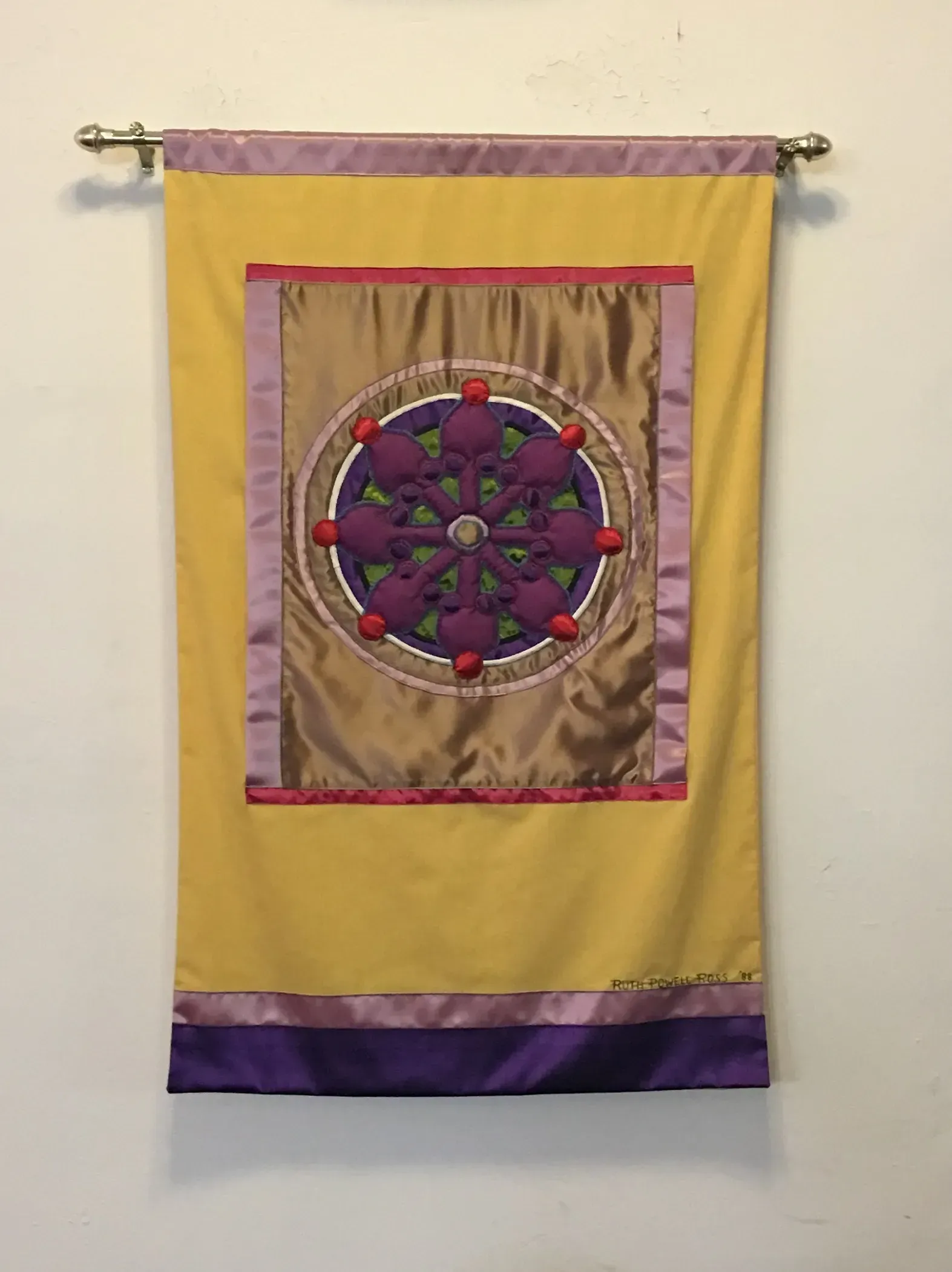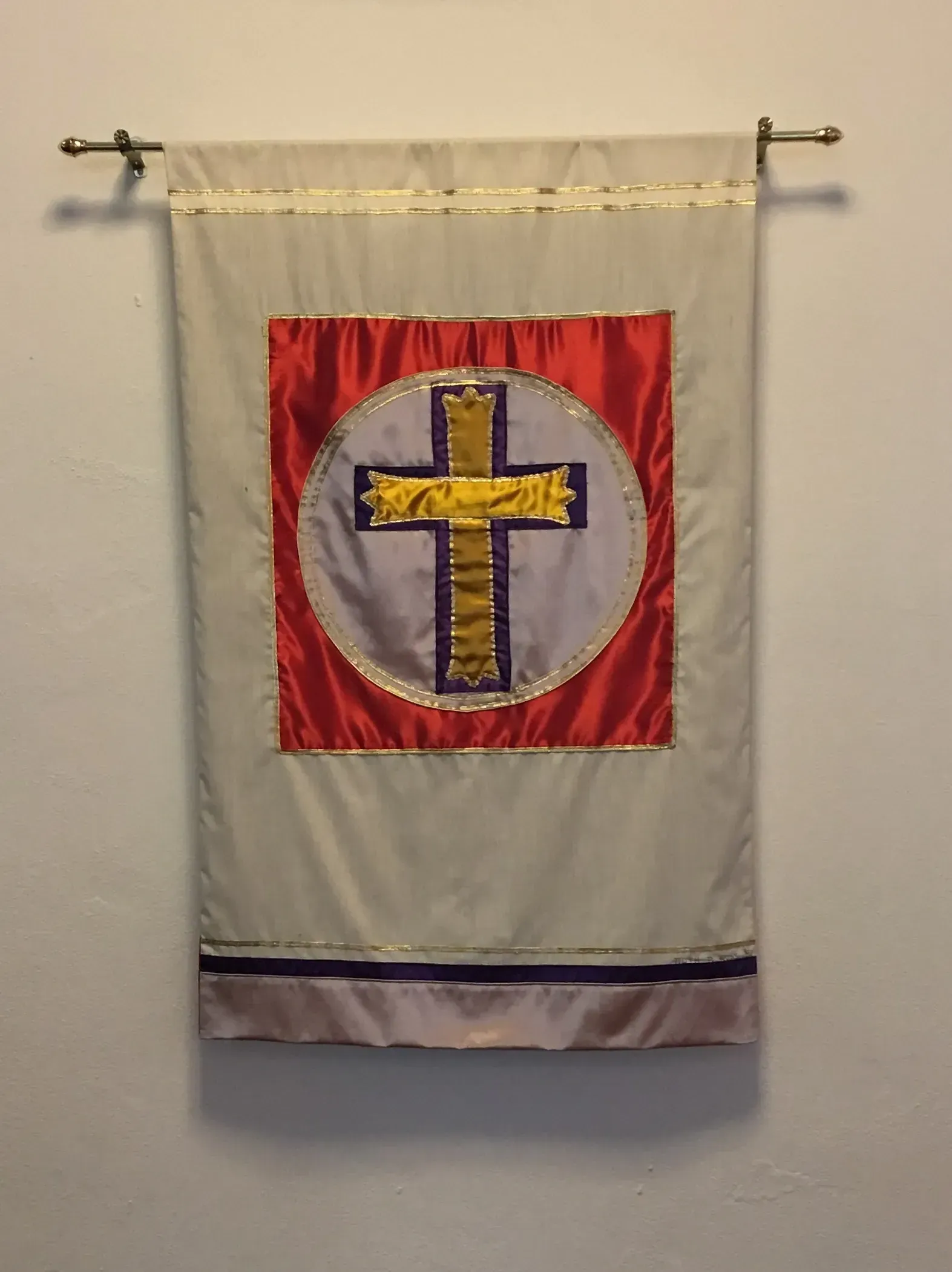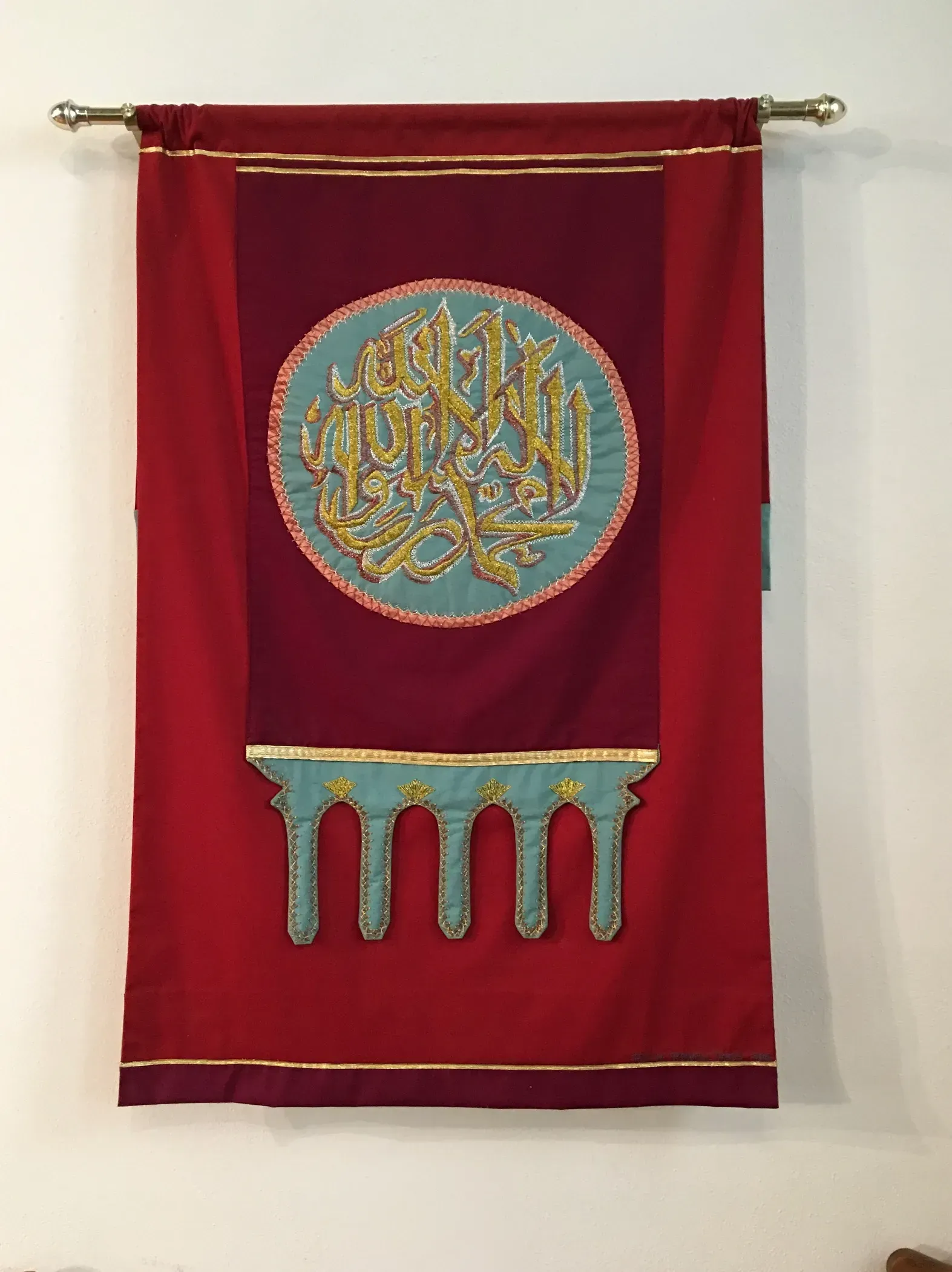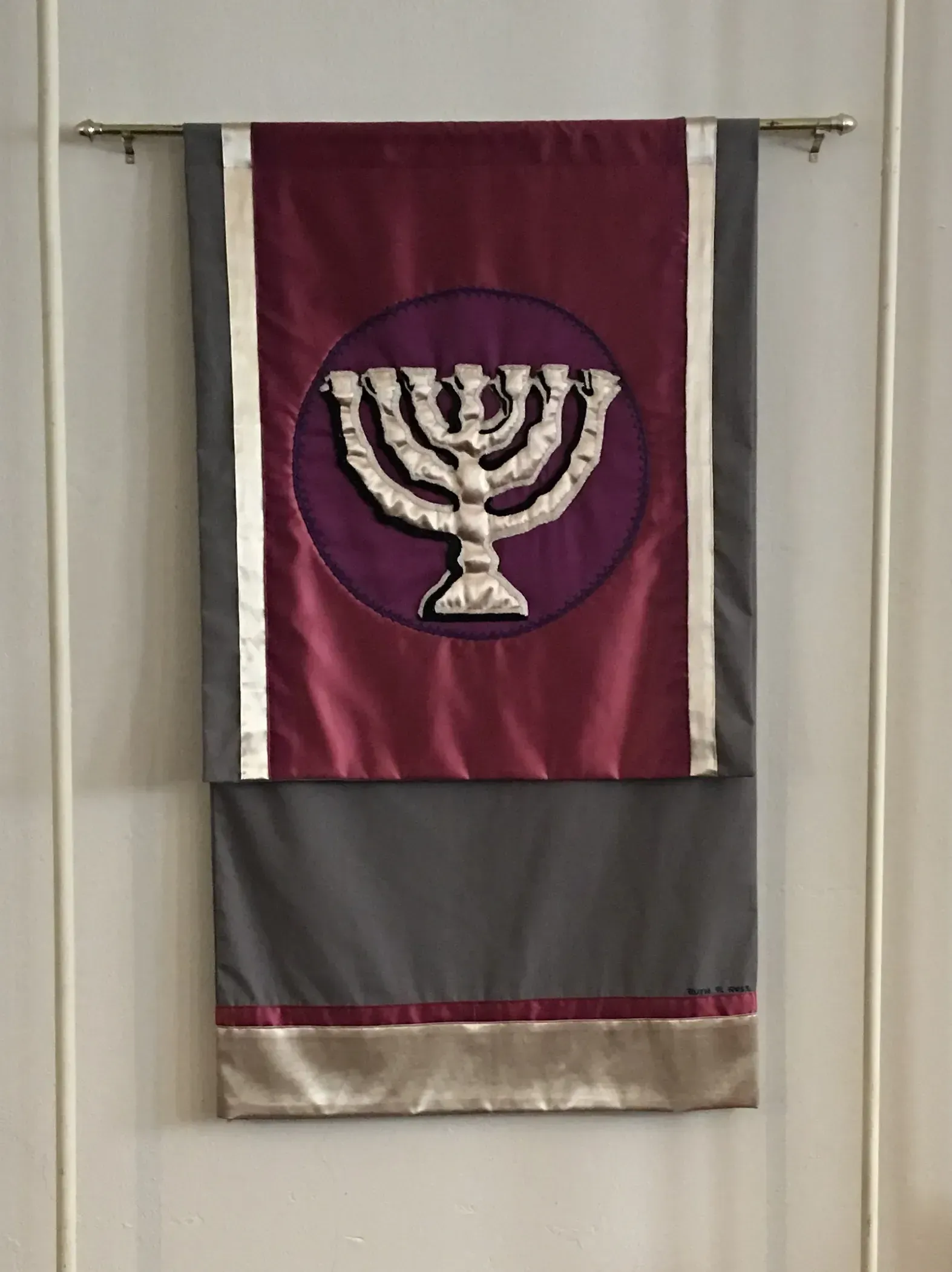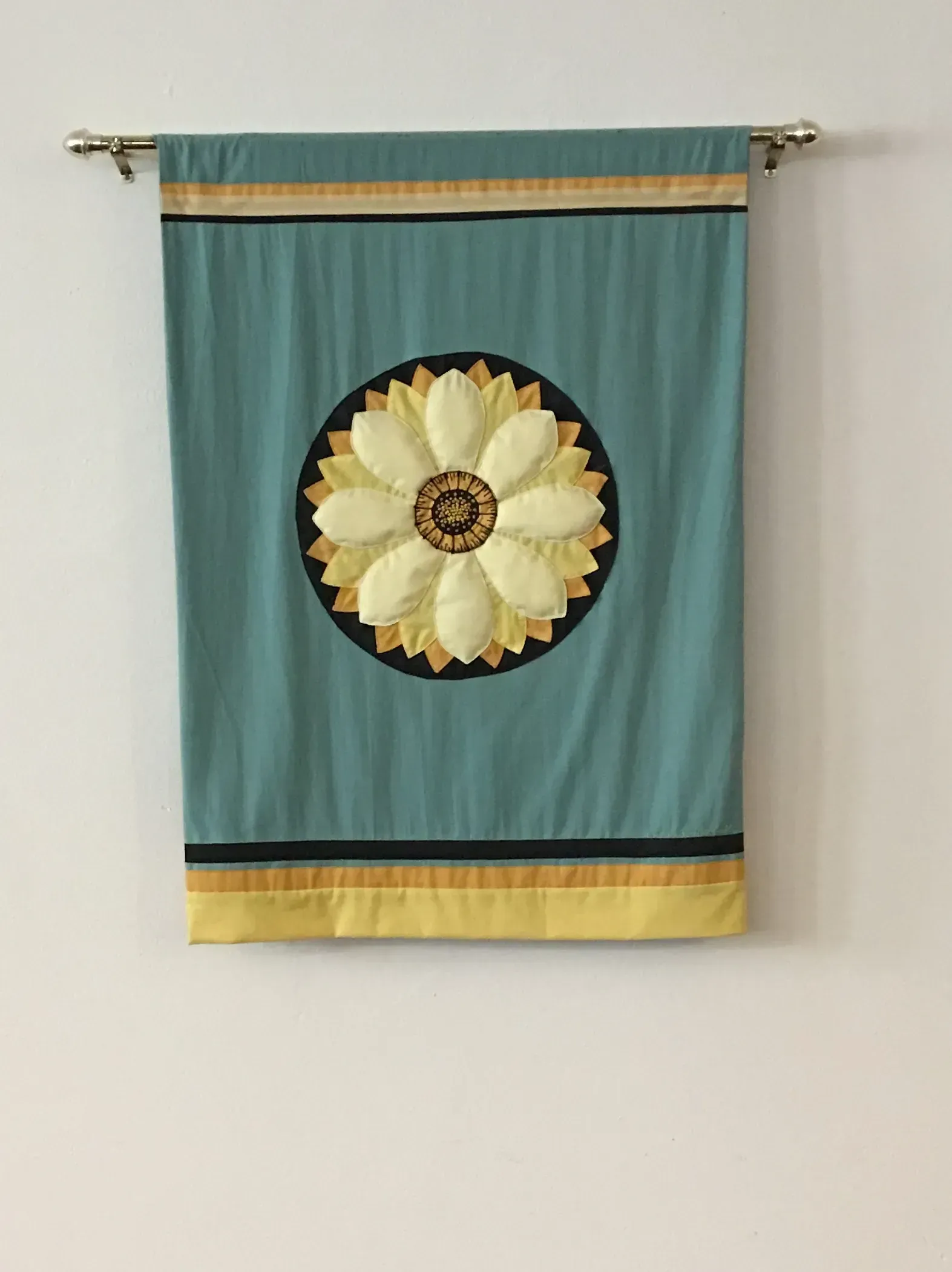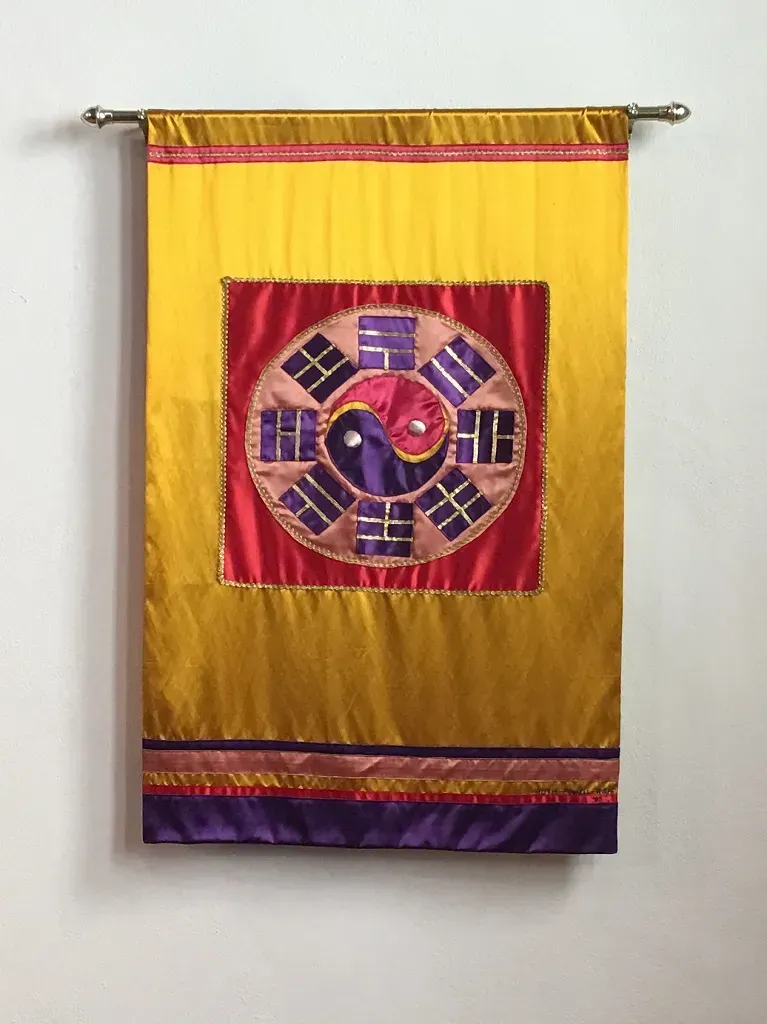Sanctuary Banners Gallery
The banners in our Sanctuary represent the diversity of our congregation and beliefs as Unitarian Universalists. We are Unitarian Universalist and Buddhist,Christian, Hindu, Humanist, Jewish, Muslim, Pagan, atheist and agnostic, believers in God, and more.
Baha’i
The nine pointed star is the symbol of the Baha’i faith. The star is not a part of the teachings of the Baha’i Faith.
It is used as an emblem representing “9” because of the association of the number 9 with perfection, unity and Baha’i. Nine is also the numerical value of the word “Baha.” This gift honors our relation to the Baha’i. In 1918, the Unitarian Minister, the Rev. Albert Vail, left the Unitarian Church of Urbana with several members and started the local Baha’i Fellowship.
Buddhism
This wheel represents Buddhism.
It is called the Wheel of Doctrine. Its eight spokes symbolize the eightfold path taught by the Nepal-born Gautama Buddha, which will lead devout believers to enlightenment, to Nirvana.
Christianity
The cross represents Christianity.
The cross reminds Christians of the salvation available to believers through the sacrifice of Jesus of Nazareth, who, according to Christian tradition, died on a cross.
Hinduism
The Sanskrit syllable Om represents Hinduism, the most ancient of the world’s great religions. Hindus believe Om was the very first sound, and that from this sound the universe was created.
Spoken during prayer, Om actually consists of three distinct sounds: a-u-m, that become one.
Islam
The Muslim creed written in Arabic represents Islam.
Islam is the youngest of the three Western religions that have grown from the life and teachings of the Hebrew prophets.
This calligraphy represents the most significant Islamic creed, “there is no god but Allah, and Muhammad is his prophet.”
Judaism
The menorah represents Judaism.
The seven branch candelabrum (menorah) is representative of the one used in the Temple in Jerusalem that was crafted by Bezalel, and placed in the sanctuary of the Tabernacle. An eight branch menorah is used in Jewish worship, especially during Hanukkah. It is said to symbolize the burning bush seen by Moses on Mt. Sinai.
Lotus
The Lotus flower is the sacred symbol in Hindu, Buddhist, and Egyptian religions.
The Lotus is type of water lily, which rises from muddy waters to blossom, making it s symbol of purity of the soul within the material world, and an emblem of resurrection. The well-known Buddhist mantra, “Om mane padme,” refers to the “jewel in the lotus,” or, enlightenment.
Taoism
The T’ai Chi, or supreme ultimate, represents Taoism and the religious traditions of China.
The center Yin and Yang are circled by eight trigrams representing recurring constellations in the midst of all flux. Each trigram is a combination of three lines. The solid lines represent Yin, the broken lines represent Yang. Taoism is based on the Tao Te Ching.
Yin Yang
The Ying Yang is the Taoist symbol of the interplay of forces in the universe.
In Chinese philosophy, the Yang represents the two primal cosmic forces in the universe. Yin is the feminine moon, Yang the masculine sun. The symbol represents the idealized harmony of these forces; equilibrium in the universe.
